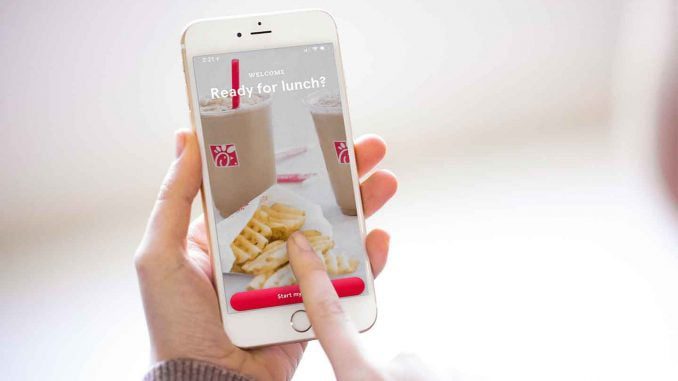
RALEIGH — Smartphones have been one of the most quickly adopted consumer technologies ever. In 2011, just 35 percent of adults had a smartphone. Now, well over three-quarters of all U.S. adults carry some sort of smartphone.
Americans shop, watch, play, communicate and plan with handhelds which have replaced a briefcase-full of other devices and options. Smartphones now account for more than 52 percent of worldwide online traffic, according to the website Statista. The bulk of social media traffic is generated on mobile devices, with the Wall Street Journal reporting that 85 percent of the time spent on Twitter is on a mobile.
While email, social media and digital content all fit into the virtual reality that is created by our smartphones, shopping is an area where digital imagery yields to true reality — without any modifiers. General shopping online — and on mobile devices — has basically reached full market penetration. But one area that is still growing is ready to eat food. The switch to mobile ordering is catching on across the U.S., with most fast food establishments offering a mobile app and most of the larger chains offering mobile ordering in some form. Current estimates show mobile sales at restaurants accounting for about 5 percent of total sales.
Sam Ramsey, owner of two Chick-fil-A restaurants in Asheboro, says the mobile capabilities are a small portion of his total sales right now.
“The ones that use it, love it,” said Ramsey. “It is satisfying a niche for certain people.”
The top restaurant apps on Apple’s App Store currently are McDonald’s, Starbucks, Chick-fil-A, Domino’s and Pizza Hut. Chances are if you want a burger, a pizza or a burrito, there’s an app for that.
While the big chains go direct to consumer with their apps, the remaining 90 percent of restaurants, according to Business Insider, do not have online ordering. Mobile entrepreneurs have sought to equalize the market with third-party applications that bring more food options to consumers. The top players in the third-party food delivery business are GrubHub, Uber Eats, DoorDash and Postmates. Online giant Amazon has also entered this space.
In North Carolina, national leader GrubHub has a significant footprint across the state. From Greenville to Asheville and Wilmington to Winston-Salem, GrubHub has the largest footprint in the Tarheel State. Uber Eats is the fastest growing food delivery service, and it has expanded significantly in N.C. with availability in the Triangle, Charlotte, Triad and Asheville areas. DoorDash and Postmates are primarily available in the largest cities in N.C. DoorDash is making a big push to compete with GrubHub and Uber Eats after securing a new $535 million investment in early 2018 which led the company to announce its plants to enter 600 new cities in the U.S. and Canada in 2018. PostMates does not show availability in Winston-Salem or Wilmington currently.
While the third-party apps try to lift an entire market into a new era, the restaurant industry is taking note of the consumer demand for mobile ordering. McDonald’s and Chick-fil-A have the most popular restaurant apps and both allow mobile ordering.
Chick-fil-A recently launched an updated version of its mobile app on the Google Play Store and on Apple’s App Store. The popular chicken chain continues to offer mobile ordering and a rewards program as it did with it first launched its app and membership program in 2016. But the updated app offers a new rewards program that includes elite status akin to hotel and airline rewards programs. Chick-fil-A customers can now achieve Silver or Red Status with the status levels delivering 10 percent and 20 percent more rewards points, respectively. Rewards points can then be redeemed through the app, at the drive-thru or at the counter for food items.
North Carolina’s own Krispy Kreme also has a top-50 app that includes rewards and online ordering. N.C. chicken purveyor Bojangles’ has a mobile app that include mobile payments and a biscuit-based rewards program, but it does not yet offer mobile ordering.
As the uptake on food apps accelerates, expect more first-party ordering applications to compete with services like GrubHub and Uber Eats. You can also expect restaurants to adapt their menus, facilities and personnel to the new retail reality of mobile ordering and delivery. For Chick-fil-A’s Ramsey, the mobile app is keeping the “fast” in fast food.
“It eliminates the time that it takes to do a transaction,” said Ramsey. “The mobile app puts the cash register in the customer’s hands.”



